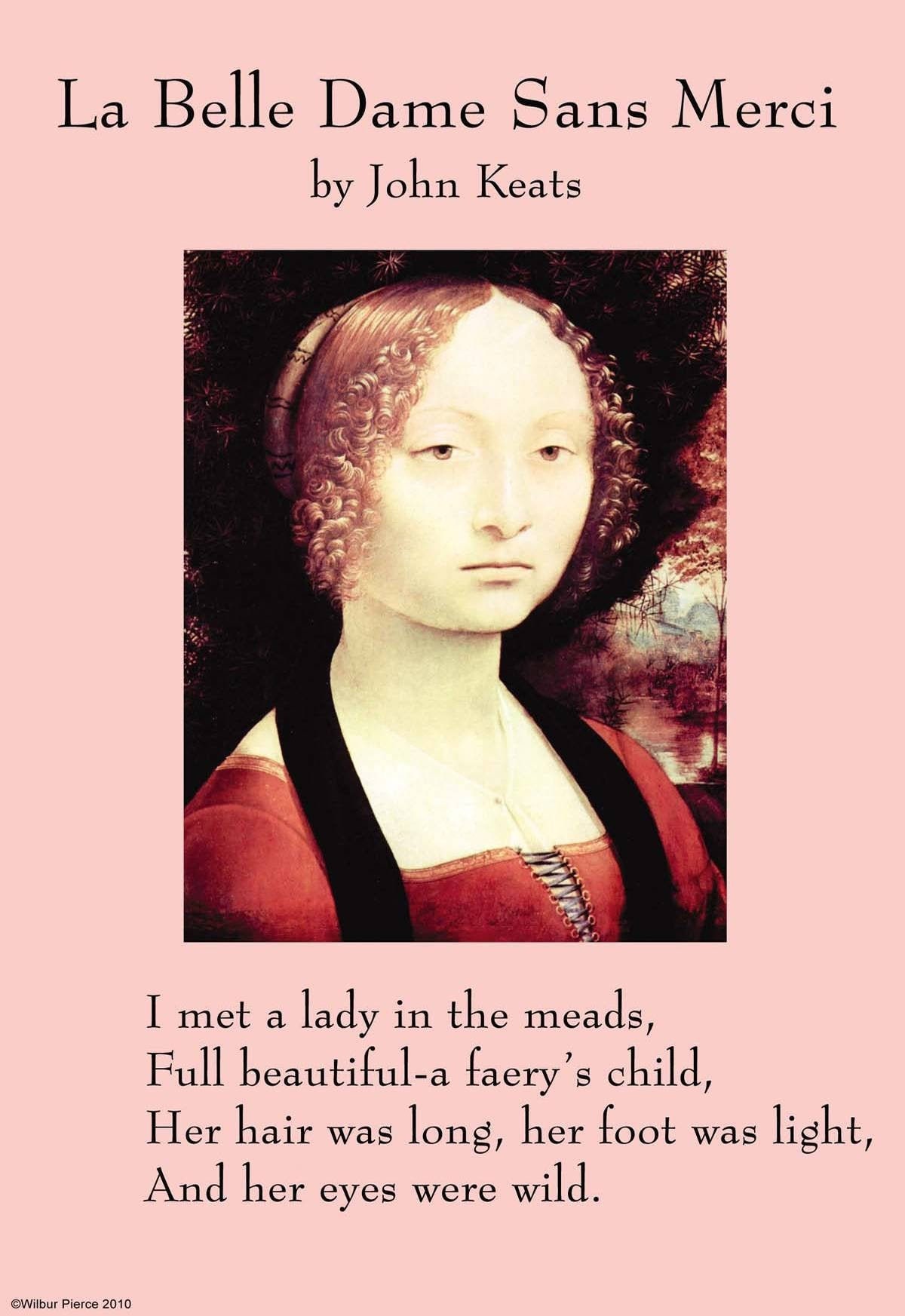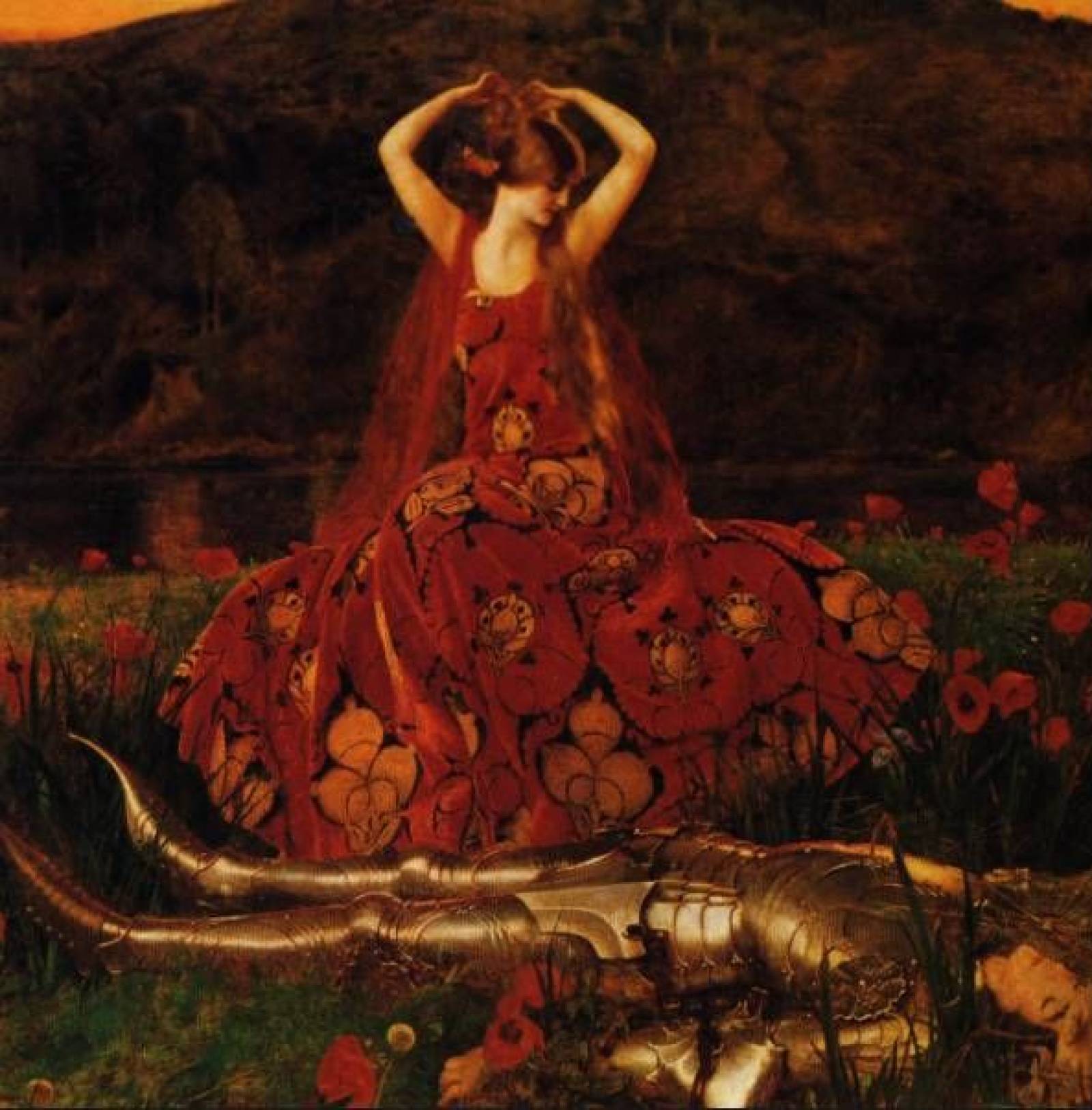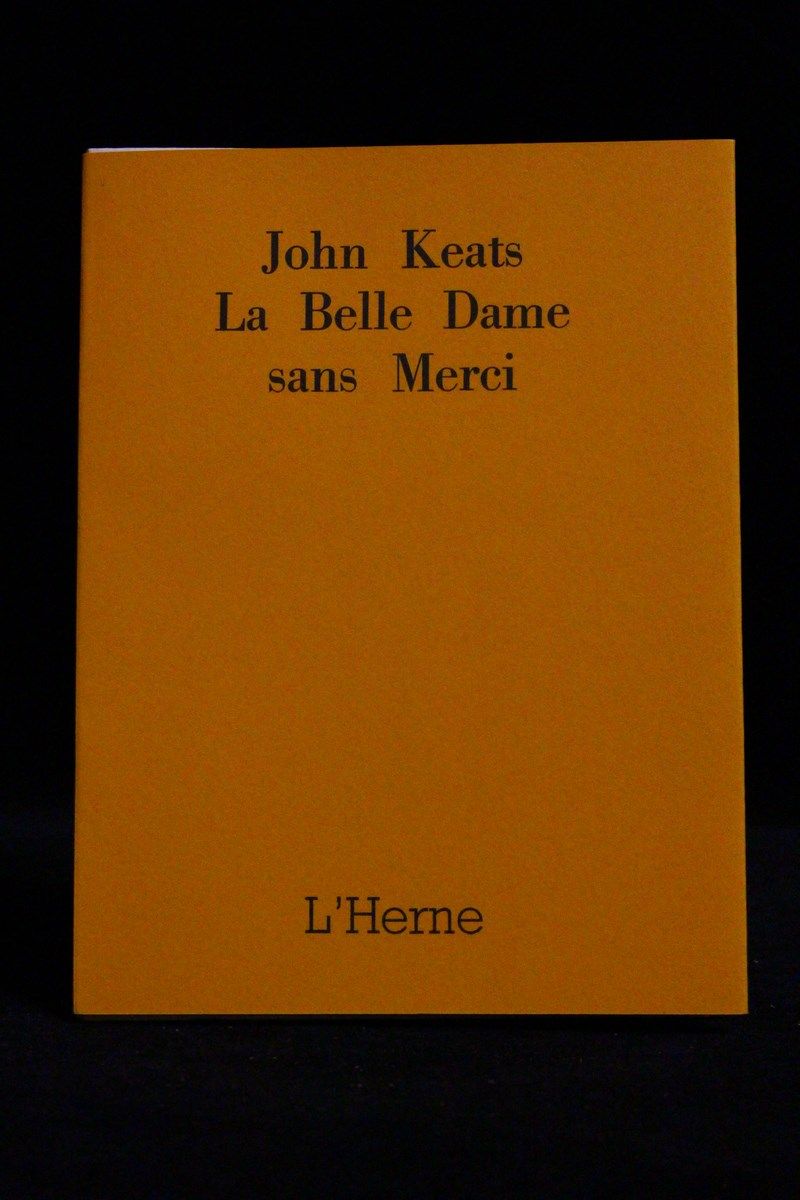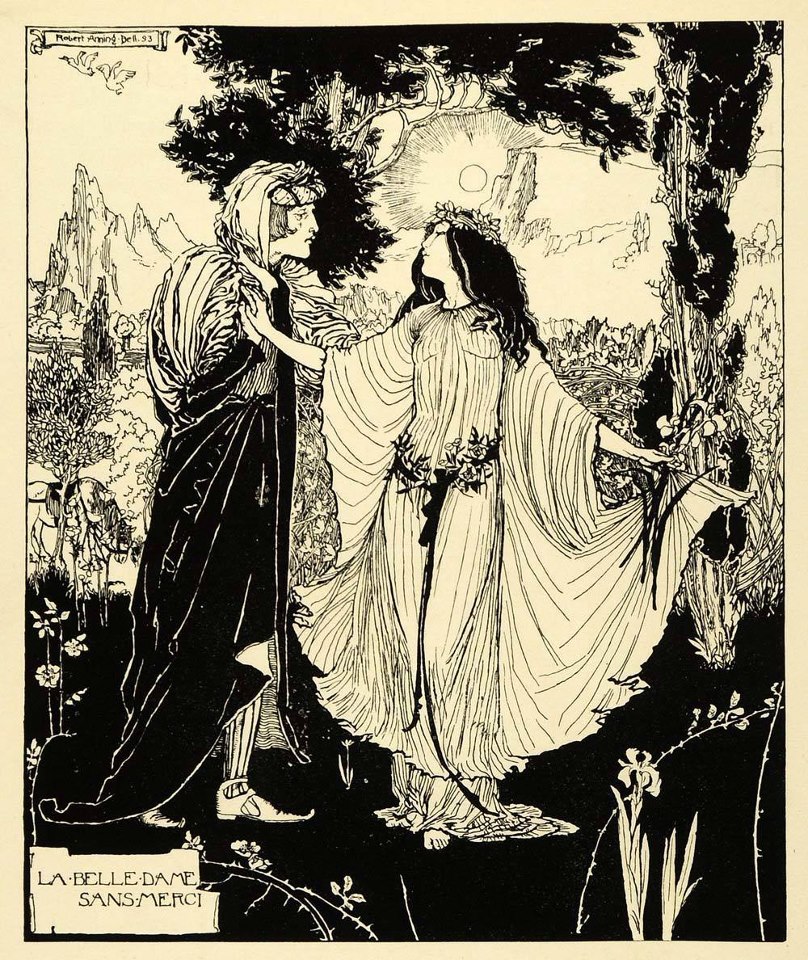
Le Belle Dame Sans Merci John Keats Keats, John keats, Writing poetry
Keats's poetry has been an inspiration for many painters, including Pre-Raphaelites. 'La Belle Dame sans Merci' (French for 'The Beautiful Lady Without Mercy') is a ballad written by the.

La Belle Dame Sans Merci john Keats Canvas Art Print Etsy
Summary 'La Belle Dame sans Merci' by John Keats is a beautiful poem about a fairy who condemns a knight after seducing him with her singing and looks. The first three stanzas introduce the unidentified speaker and the knight. The speaker comes across the knight wandering around in the dead of winter when "the sedge has withered from the lake/ And no birds sing."

'La Belle Dame Sans Merci A Ballad' John Keats YouTube
1. John Keats (1795-1821) wrote La Belle Dame Sans Merci on 21st April 1819, which was three months after he wrote The Eve of St Agnes. Although the two poems are very different — in length.

John Keats’ La Belle Dame Sans Merci The Toast
Popularity of "La Belle Dame sans Merci": John Keats, a great English poet wrote 'La Belle Dame sans Merci'. It is a ballad published in 1819. The title was derived from the poem, La Belle Dame sans Mercy, written by Alain Chartier. The poem speaks about the story of a knight and a beautiful woman. It then illustrates how love plays a.

John Keats La belle dame sans Merci elefant.md
Every word in John Keats ' ballad "La Belle Dame sans Merci" overflows with a romantic and ethereal quality. The poem is a masterpiece; in words, it paints a vivid image of medieval lore. Keats uses an abundance of sensory words, showing how the senses can be overindulged by tangible and physical pleasures.

La Belle Dame Sans Merci (Original Version ) Poem by John Keats Poem Hunter
John Keats La Belle Dame sans Merci 'O WHAT can ail thee, knight-at-arms, Alone and palely loitering? The sedge is wither'd from the lake,. John Keats 1795-1821 : By the same poet: On first looking into Chapman's Homer: The Realm of Fancy: Ode on a Grecian Urn: Ode to a Nightingale: Ode to Psyche:
_-_(MeisterDrucke-1400869).jpg)
John Keats La Belle Dame Sans Merci (color litho)... (1400869)
Table of Contents. La Belle Dame sans merci, poem by John Keats, first published in the May 10, 1820, issue of the Indicator. The poem, whose title means "The Beautiful Lady Without Pity," describes the encounter between a knight and a mysterious elfin beauty who ultimately abandons him. It is written in the style of a folk ballad, with the.

La Belle Dame Sans Merci. Illustration of a poem by John Keats . 1899. 782 La Belle Dame Sans
La Belle Dame sans Merci: summary 'La Belle Dame sans Merci.' 'The woman is beautiful, but merciless.' Keats's title, which he got from a 15 th-century courtly love poem by Alain Chartier (La Belle Dame sans Mercy), provides a clue to the poem's plot: in summary,the poem begins with the speaker asking a knight what's wrong - this knight-at-arms is on his own, looking pale as he.

John Keats La Belle Dame sans Merci Genius
A beautiful tragic poem about a knight that gets trapped by a mysterious girl, who turns out to be more than she seems! Here's a full analysis of the poem 'La Belle Dame sans Merci' including vocabulary, context, language techniques, and structure / form devices. It's great for students aged 13+, including those taking it for GCSE or.

Pin auf Hübsches
"La Belle Dame Sans Merci" is a ballad—one of the oldest poetic forms in English. Ballads generally use a bouncy rhythm and rhyme scheme to tell a story. Think about an event that has happened to you recently and try to tell it in ballad form.. John Keats was born in London on 31 October 1795, the eldest of Thomas and Frances Jennings.

La Belle Dame sans Merci Poem Analysis
"La Belle Dame sans Merci" is a ballad by John Keats, one of the most studied and highly regarded English Romantic poets. In the poem, a medieval knight recounts a fanciful romp in the countryside with a fairy woman—La Belle Dame sans Merci, which means "The Beautiful Lady Without Mercy" in French—that ends in cold horror.Related to this focus on death and horror, Keats wrote the poem.

John Keats La Belle Dame sans Merci Genius
The squirrel's granary is full, And the harvest's done. I see a lily on thy brow, With anguish moist and fever dew; And on thy cheek a fading rose Fast withereth too. I met a lady in the meads Full beautiful --- a faery's child; Her hair was long, her foot was light, And her eyes were wild. I made a garland for her head, And bracelets too, and.

John Keats La Belle Dame sans Merci Genius
'La Belle Dame Sans Merci' was originally the name of an anonymous fourteenth-century English poem about a cruel woman, but the title 'La Belle Dame Sans Merci' is more commonly associated with John Keats's poem which tells the story of a knight-at-arms who was seduced by a woman who was more fairy than human (you know the sort of thing), lured back to her cave, and then abandoned on.

KEATS La belle dame sans merci Edition Originale
And there we slumbered on the moss, And there I dreamed, ah woe betide, The latest dream I ever dreamed. On the cold hill side. I saw pale kings, and princes too, Pale warriors, death-pale were they all; Who cried—"La belle Dame sans merci. Hath thee in thrall!" I saw their starved lips in the gloam.

John Keats La Belle Dame sans Merci Genius
When John Keats was finishing "La Belle Dame sans Merci" in the early spring of 1819, he was just weeks away from composing what would become some of English literature's most sustained and powerful odes. "La Belle Dame," a compact ballad, is wound as tightly as a fuse. Keats's life and conflicts, his love for his neighbor Fanny Brawne, and his awareness of impending death are.

John Keats, "La Belle Dame Sans Merci" (1820) Mary Shelley Wiki FANDOM powered by Wikia
The poem 'La Belle Dame Sans Merci' by John Keats was first published on May 10, 1820 in Leigh Hunt's The Indicator. Keats's health was failing, and under pressure he agreed to certain revisions to the original draft of the poem, which had never been published previously. He used a pseudonym 'Caviare'; this choice perhaps, rather.